Mad Hedge Biotech and Healthcare Letter
January 11, 2024
Fiat Lux
Featured Trade:
(HEALTHCARE GIANTS GO SHOPPING)
(JNJ), (MRK), (AMAM), (PFE), (HARP), (NVS), (CYTK)
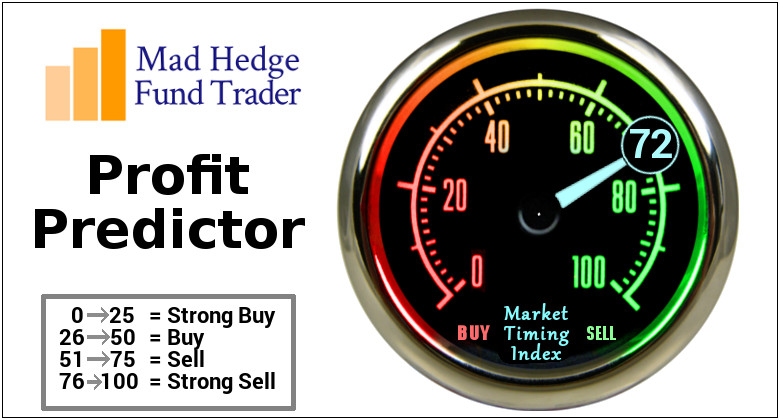
Mad Hedge Biotech and Healthcare Letter
January 11, 2024
Fiat Lux
Featured Trade:
(HEALTHCARE GIANTS GO SHOPPING)
(JNJ), (MRK), (AMAM), (PFE), (HARP), (NVS), (CYTK)

Ah, San Francisco, the city of fog and fabulous biotech and healthcare feasts. In case you missed it, the J.P. Morgan annual healthcare conference, the biotech Super Bowl, just kicked off this January.
Imagine a bustling downtown San Francisco, where hotels are as jam-packed as a can of sardines, but instead of fish, they're brimming with investors and healthcare execs.
Let's focus on the biotech sector, which, let's be honest, has seen its fair share of ups and downs. The past three years? More like watching paint dry.
But, as if by magic, we've seen a recent upturn. A two-month price surge that’s as unexpected as it is welcome.
The SPDR S&P Biotech ETF (XBI), our financial barometer here, has gone from a nosedive (down over 60% since February 2021) to a rocket ship (up nearly 40%). Interest rate cuts and M&A buzz are like the Red Bull in this energy drink mix.
Now, to the heart of the story: big pharma's shopping spree.
The day of surprise comes when Merck & Co. (MRK) and Johnson & Johnson (JNJ) strut in with deals that leave us wide-eyed.
And these are not just any deals, but the kind where these healthcare giants are practically throwing money like it's going out of style – over 100% premiums over the last prices. It's like offering to pay double for a house just because you love the wallpaper.
Johnson & Johnson swoops in on Ambrx Biopharma (AMAM) for a cool $2 billion. At $28 per share, they're paying a 105.4% premium.
For context, this isn't your run-of-the-mill biopharmaceutical company. Oh no, Ambrx is more like the Elon Musk of the biotech world, innovating like there's no tomorrow.
This biotech is all about cooking up some of the most cutting-edge therapies out there – think antibody-drug conjugates (ADCs) and other engineered marvels that give the immune system a superhero makeover.
On top of that, Ambrx actually has a secret weapon – their expanded genetic code technology platform called Engineered Precision Biologics (EPBs).
This technology isn't just smart; it's Einstein-level genius. It brings together site-specific conjugation with proprietary linkers and payloads. It's like building a custom-made luxury car, except this one's designed to obliterate cancer.
Researchers are raving about Ambrx's ADCs, calling them “guided missiles.” And they're not exaggerating.
These bad boys zero in on cancer cells with the precision of a sniper, taking them out without wreaking havoc on the innocent bystanders – the healthy tissue. It's pretty much like having a Swiss watch in your medical arsenal, sleek, sophisticated, and super effective.
Impressively, Ambrx isn't stopping at just being a one-hit wonder. They're pushing the envelope with enhanced antibody-drug conjugate, immuno-oncology conjugate, and bispecific candidates. These aren't just treatments; they're potential game-changers in the war against cancer.
So, when Johnson & Johnson ponied up $2 billion for Ambrx, they weren't just buying a company; they were investing in a future where cancer might just meet its match.
In fact, Pfizer (PFE) recently grabbed Seagen for $43 billion in 2023, just to get a slice of this ADC pie. It's the latest fashion in cancer treatment, and everyone wants in.
Meanwhile, Merck, not to be outdone, grabs Harpoon Therapeutics (HARP) for $680 million, a 118% premium at $23 per share. It's a biotech-feeding frenzy, and Merck's got its teeth out.
Harpoon is a clinical-stage immunotherapy company that's not just playing in the big leagues, but changing the game. They're all about developing a novel class of T-cell engagers, and let me tell you, this stuff is like the Navy SEALs of cancer treatment.
Imagine these T-cell engagers as tiny, engineered proteins. They're like undercover agents directing a patient’s own T-cells (the body's immune commandos) to seek and destroy cells waving the bad guy flag – specific proteins or antigens carried by those nasty cancer cells.
Basically, it's like having a GPS-guided missile system in your body, targeting only the rogue cells.
And Harpoon isn't just dabbling here, but also innovating with their proprietary Tri-specific T cell Activating Construct (TriTAC) platform.
Picture a pipeline, but instead of oil, it's flowing with novel TriTACs focusing on laying siege to solid tumors and blood malignancies. If successful, they plan to arm the immune system with a whole new arsenal.
Aside from these, Harpoon also whipped up something they call the ProTriTAC platform. Think of it as the James Bond of T-cell engagers – it stays under the radar (inactive) until it gets to the tumor. Once there, it's “license to kill” mode on. This prodrug concept is slick, ensuring that the therapeutic action happens right where the trouble is, and not anywhere else.
And for their third act, Harpoon presents the TriTAC-XR platform. This one's a bit of a tightrope walker, designed to dodge a potential pitfall known as cytokine release syndrome – a sort of overreaction from the immune system. It’s like having a safety net under your high-wire act.
Now, these premiums are not just showing off. They're a sign of desperate love from big pharma for these biotech beauties, a stark contrast to the recent cold shoulder of stock market blues.
Recently, there have also been whispers of Novartis (NVS) eyeing Cytokinetics (CYTK), a biotech belle with a $9.2 billion price tag. It's like the gossip at a high school prom, only with more zeros.
So, what's the takeaway from this biotech bazaar? It's simple: after a snooze-fest of a bear market, biotech's back, and it's hotter than a stolen Ferrari.
For investors, it's like watching a new season of your favorite show, only this time, the plot twists involve billion-dollar deals and cutting-edge cancer drugs. I suggest you buy the dip.
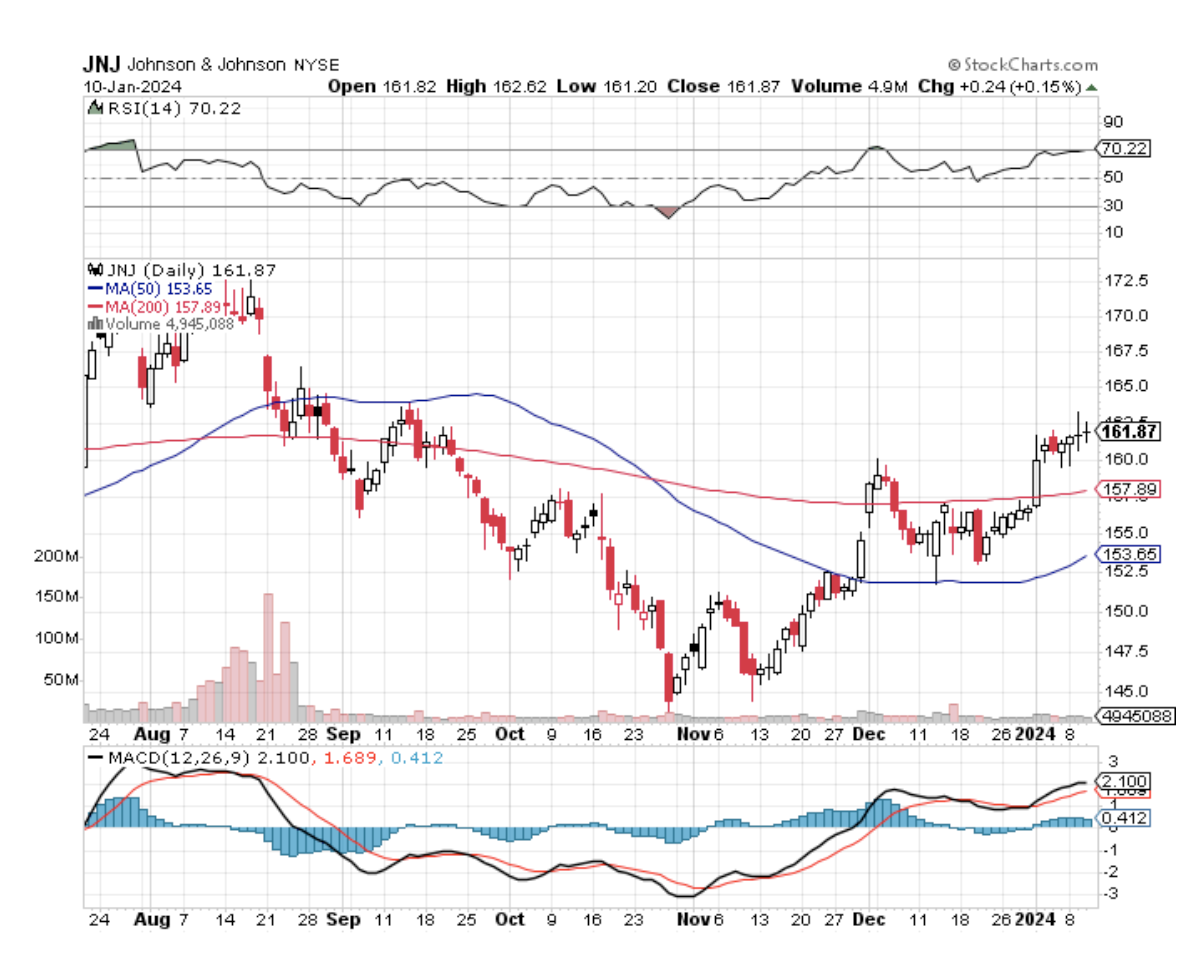
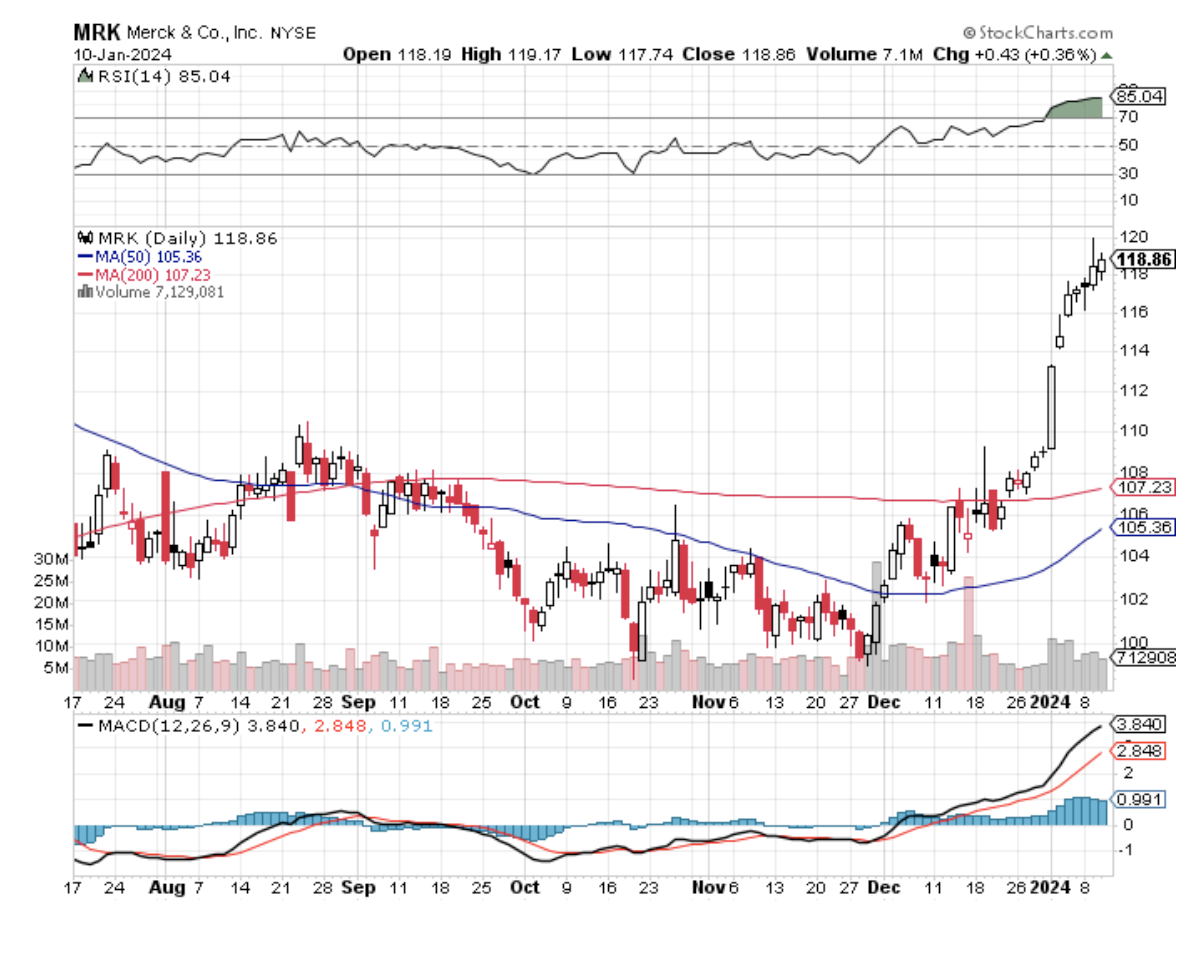
Mad Hedge Biotech and Healthcare Letter
December 28, 2023
Fiat Lux
Featured Trade:
(CLOSING THE YEAR WITH A BANG)
(XBI), (ABBV), (IMGN), (RHHBY), (PFE), (MRK), (AMGN), (VKTX), (TERN)

The biotechnology sector, pretty much like a phoenix rising from the ashes of its recent lackluster performance, is experiencing a renaissance as 2023 draws to a close. The recent spree of high-stakes deals has set the stage for what could be a significant rebound, a situation that savvy investors should watch closely.
In a remarkable display of strategic maneuvering, AbbVie (ABBV) has been on an acquisition tear.
Earlier in December, they've recently snapped up Cerevel Therapeutics for an eye-popping $8.7 billion, only a week after announcing their intent to acquire ImmunoGen (IMGN) for a formidable $10.1 billion.
And in this high-stakes game, Roche Holding (RHHBY) isn't playing second fiddle, having declared their acquisition of Carmot Therapeutics for $2.7 billion.
This flurry of activity isn't just a few isolated incidents. It's actually a trend. Of the 18 biotech acquisitions exceeding $1 billion announced this year, a significant one-third have emerged since October. This surge is like a shot in the arm for the sector, suggesting a much-anticipated uptick.
But let's take a step back and consider the broader picture.
The SPDR S&P Biotech ETF (XBI) has shown some muscle in November and December. However, it's still trailing behind this year, down by 3%, while the S&P 500 has surged by 19.5%.
Now, focusing on the XBI, a temperature check for the sector: trading around $80, it's a steep drop from its heyday in the $140 range during late 2020 and early 2021. It's down nearly 50% from its peak in February 2021.
This isn't just a dip; it's a nosedive.
Looking at the turn of events, it’s possible that the AbbVie-ImmunoGen deal is perhaps the precursor to a more consistent pattern of mergers and acquisitions in 2024. It seems that we've hit the floor and the only way now is up, with M&A activities poised to inject some much-needed vitality into the sector.
In previous years, the biotech valuations took a hit, and understandably, companies were hesitant to settle for offers that undervalued them compared to their pandemic-era zeniths. But this year, the tide has turned.
Notably, the cumulative value of biopharma deals at a whopping $128 billion this year, shooting up from $61 billion in 2022.
Key transactions fueling this jump include Pfizer's (PFE) massive $43 billion deal for Seagen and Merck’s (MRK) $10.8 billion acquisition of Prometheus Biosciences.
The shift in the regulatory landscape is also worth noting.
Antitrust regulators, who initially seemed poised to block deals like Amgen's (AMGN) $27.8 billion acquisition of Horizon Therapeutics, have shown more flexibility. This change in stance is likely emboldening companies to pursue larger deals.
Now, let's talk about the financial clout.
Large-cap biopharma companies are projected to have about $199 billion in cash by year-end. There's a noticeable dip in dividends and stock buybacks, hinting at a strategic pivot towards mergers and acquisitions. It could indicate that we can expect Pharma to maintain an aggressive stance on the M&A front.
So, what's in store for the XBI and investors alike?
This uptick in M&A activity is like untying the strings of a tightly held purse, releasing cash back into the sector. It's a magnet for both specialist and generalist investor interest, a potential boon for the XBI.
Predicting the next wave of M&A is basically like reading tea leaves. Yet, this year has shown a marked preference for biotechs specializing in obesity, immunology, and cancer.
A notable example is the speculation around Pfizer eyeing a deal with a biotech firm developing an anti-obesity pill.
The ripple effect? Shares of Viking Therapeutics (VKTX) and Terns Pharmaceuticals (TERN), both in the obesity pill race, have seen their stocks jump 47% and 62.5%, respectively, in December.
Evidently, the biotech sector, once in the doldrums, is now witnessing a renaissance. This resurgence is marked by major deals reshaping the industry landscape, holding significant implications for 2024 and beyond.
For investors, this sector represents a fertile ground for growth and opportunity. Staying informed and nimble is key to capitalizing on these dynamic developments. The biotech sector, it seems, is back in the game, and how!
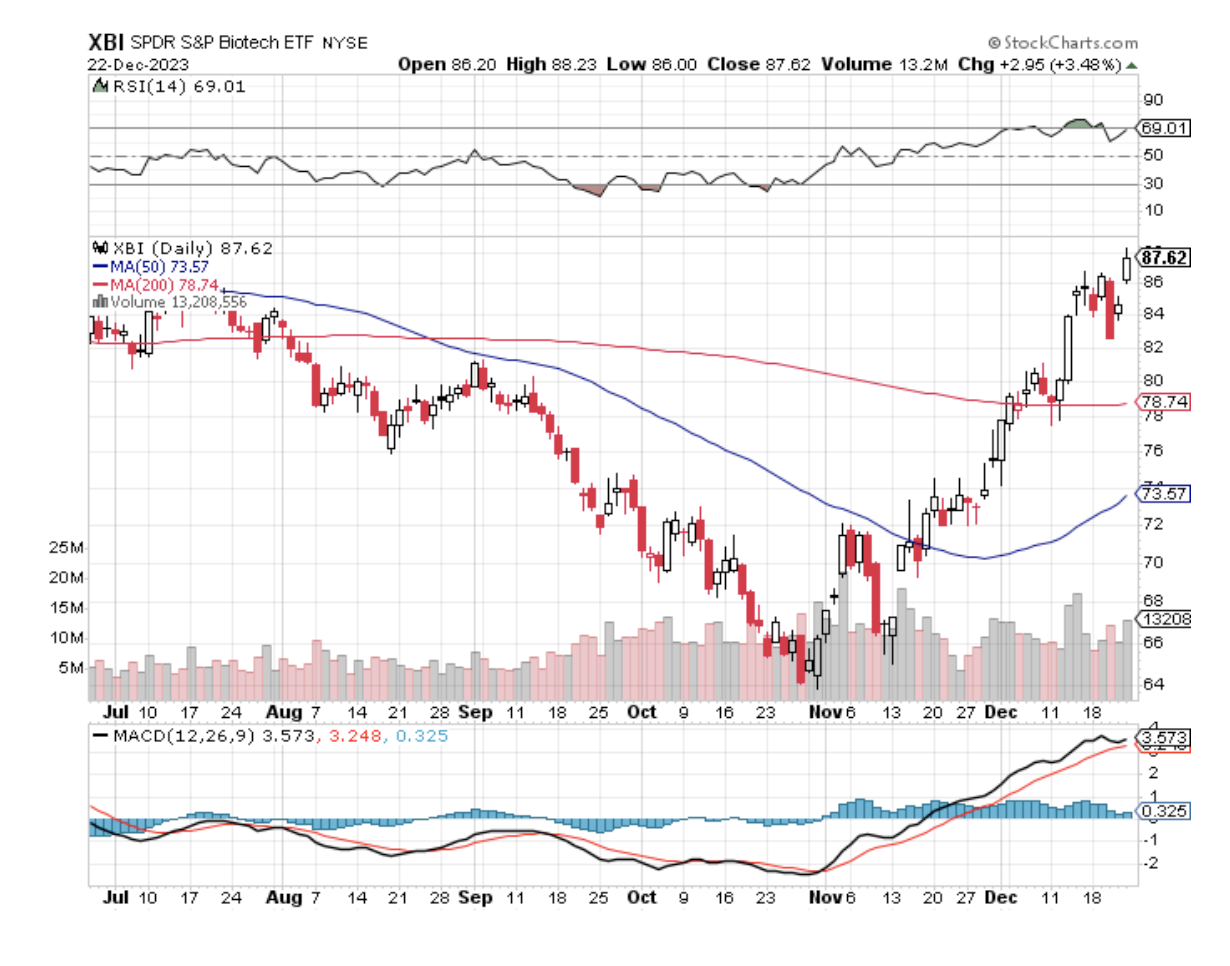
Mad Hedge Biotech and Healthcare Letter
December 21, 2023
Fiat Lux
Featured Trade:
(UNLEASHING THE UNDERDOGS)
(NVS), (LLY), (PNT), (RYZB), (MRK), (ABBV)
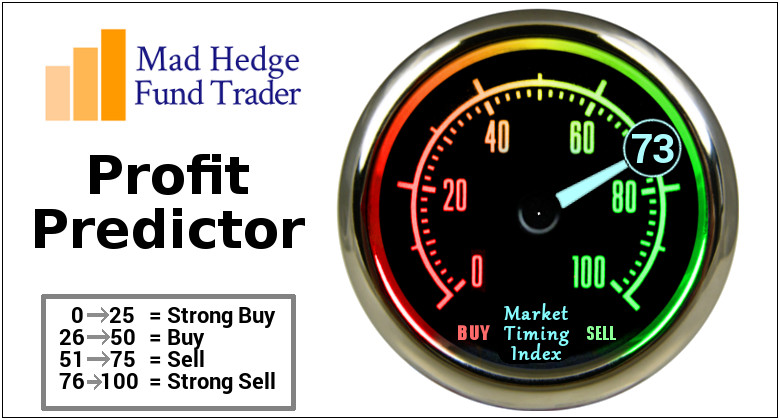
Grab your notebooks because class is in session, and today's topic is radiopharmaceuticals.
Yes, you heard it right - radiopharmaceuticals. It’s not your everyday cocktail party topic, but it's certainly the buzzword in the biotech investing world. And let me tell you, the numbers are sizzling.
Venture capital deals in this sector have shot up by an eye-watering 550% to $408 million this year. Back in 2017, this figure was a mere $63 million. Talk about going from zero to hero.
The global market for these radioactive wonders zoomed past $5.2 billion in 2022 and is now racing towards an estimated $13.67 billion by 2032. That's a CAGR of 10.2% for the statisticians among us.
So, what's cooking in the radiopharmaceutical kitchen? Well, a lot, apparently.
Leading the pack are the heavyweights – Novartis (NVS) and Eli Lilly (LLY). Novartis has thrown its hat into the ring, making radiopharmaceuticals a showstopper in its oncology lineup. With stars like Lutathera and Pluvicto, they're not just playing; they're here to dominate.
As for Eli Lilly, they're playing catch-up but with style. They laid down a cool $1.4 billion for Point Biopharma Global — a biotech gem focusing on radioligand therapies. Notably, Point investors are playing hardball, waiting for a Phase 3 reveal.
Meanwhile, Eli Lilly's also buddied up with Mariana Oncology and its $175 million Series B – these guys are eyeing small cell lung cancer with a glint in their eye.
So, what does this mean for the investor universe? Well, in a nutshell, it's party time. Early-stage companies, especially those with their lab coats on in discovery and preclinical stages, are like magnets to investors right now.
There’s POINT Biopharma, which hails from Indianapolis, that went public on Nasdaq as of July 1, 2021. Remember the ticker symbol “PNT”? That's them, and they currently have roughly $1.33 billion in market cap.
Another promising option is Mallinckrodt Pharmaceuticals. These folks are into everything from specialty pharmaceuticals to, you guessed it, radiopharmaceuticals—an American-Irish charm, if I may say so.
Abdera Therapeutics, a Canadian startup (eh!), is also in the running. This company is all about precision radiotherapeutics. They're eyeing small-cell lung cancer, and they've got the funds to back it up.
And then there’s ARTBIO, with an impressive $90 million Series A six months post-launch.
There’s also RayzeBio (RYZB), which is based in sunny California. They're not just turning heads; they're opening wallets. This company raised a whopping $160 million in Series D last year and then sprinted towards a dazzling $311 million IPO just last September.
Between 2018 and 2023, US-based radiopharmaceutical companies attracted a hefty $1.2 billion in venture financing. The peak? A cool $262 million in 2021. And guess what? Most of this dough was for preclinical and discovery shenanigans.
But let's not forget the hurdles, particularly the supply challenges and overwhelming demand. Yet, despite these hiccups, the sector remains hotter than a summer in the Sahara.
Prior to this, ADCs (Antibody Drug Conjugates) dominated the conversation.
We witnessed Merck (MRK) confidently investing $4 billion in Daiichi Sankyo for their ADC prospects. Lilly was busy forming a cozy partnership with Mablink Bioscience. And let's not forget AbbVie (ABBV), which generously splurged $10.1 billion on ImmunoGen's Elahere.
To this day, ADCs are still the talk of the town. But here's the thing: radiotherapeutics might be the underdog next to ADCs, but they're catching up. Fast.
This sector is bubbling with potential, simmering with innovation. For investors and pharma bigwigs, radiopharmaceuticals are more than just a fad. They're the future.
So, what's the takeaway? Radiotherapeutics might not be grabbing the spotlight like ADCs, but they’re like that quiet kid in class who ends up acing the test.
Mark my words. This is one space in oncology that's set to make some serious noise in the coming years.
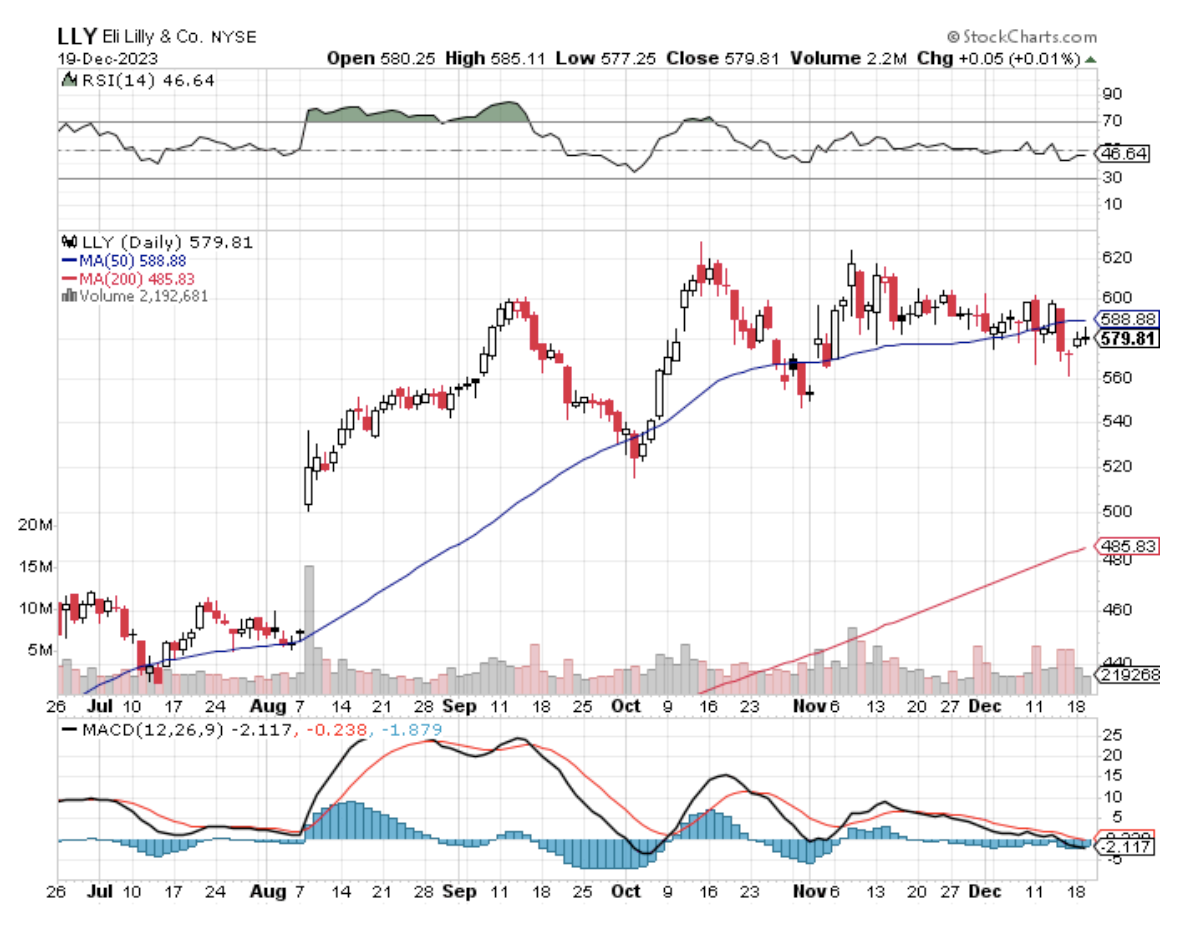
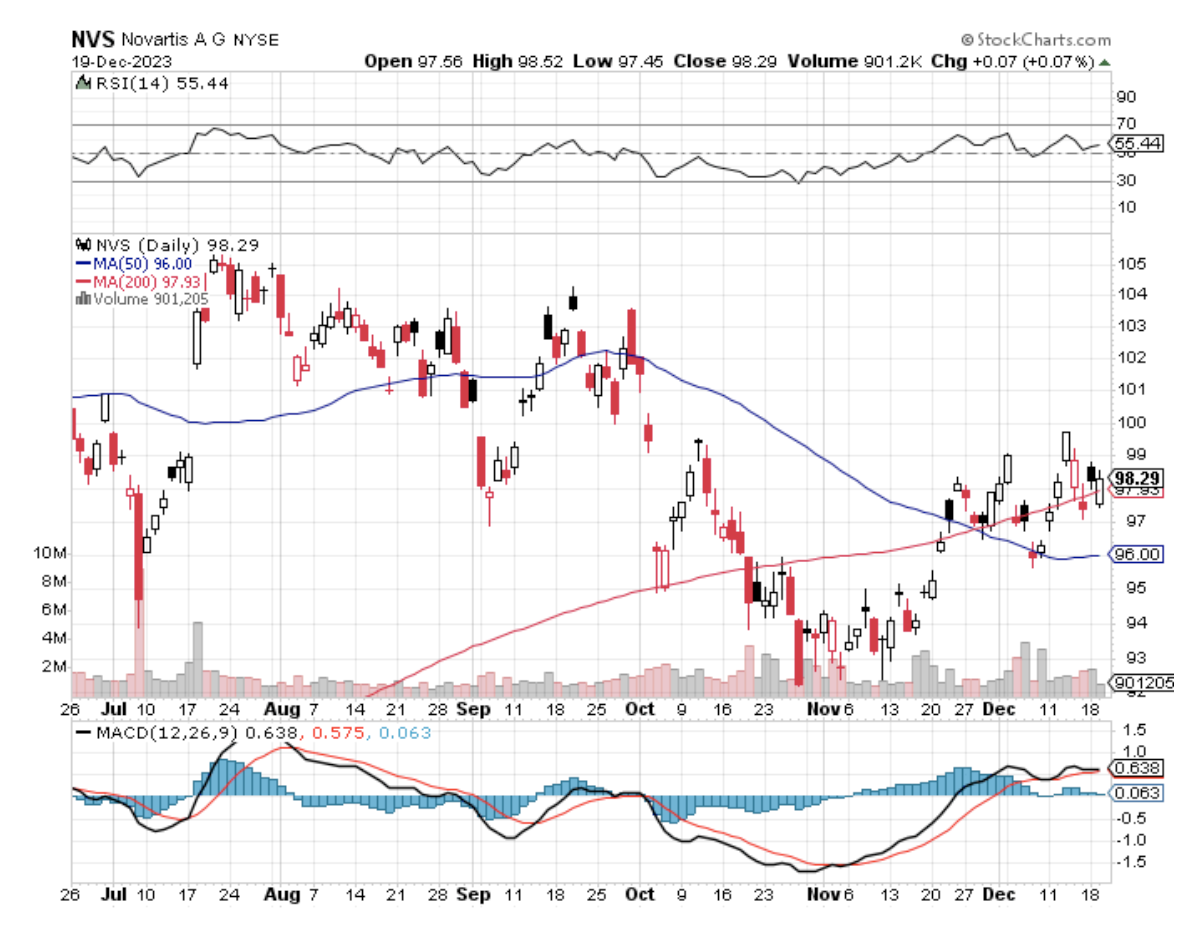
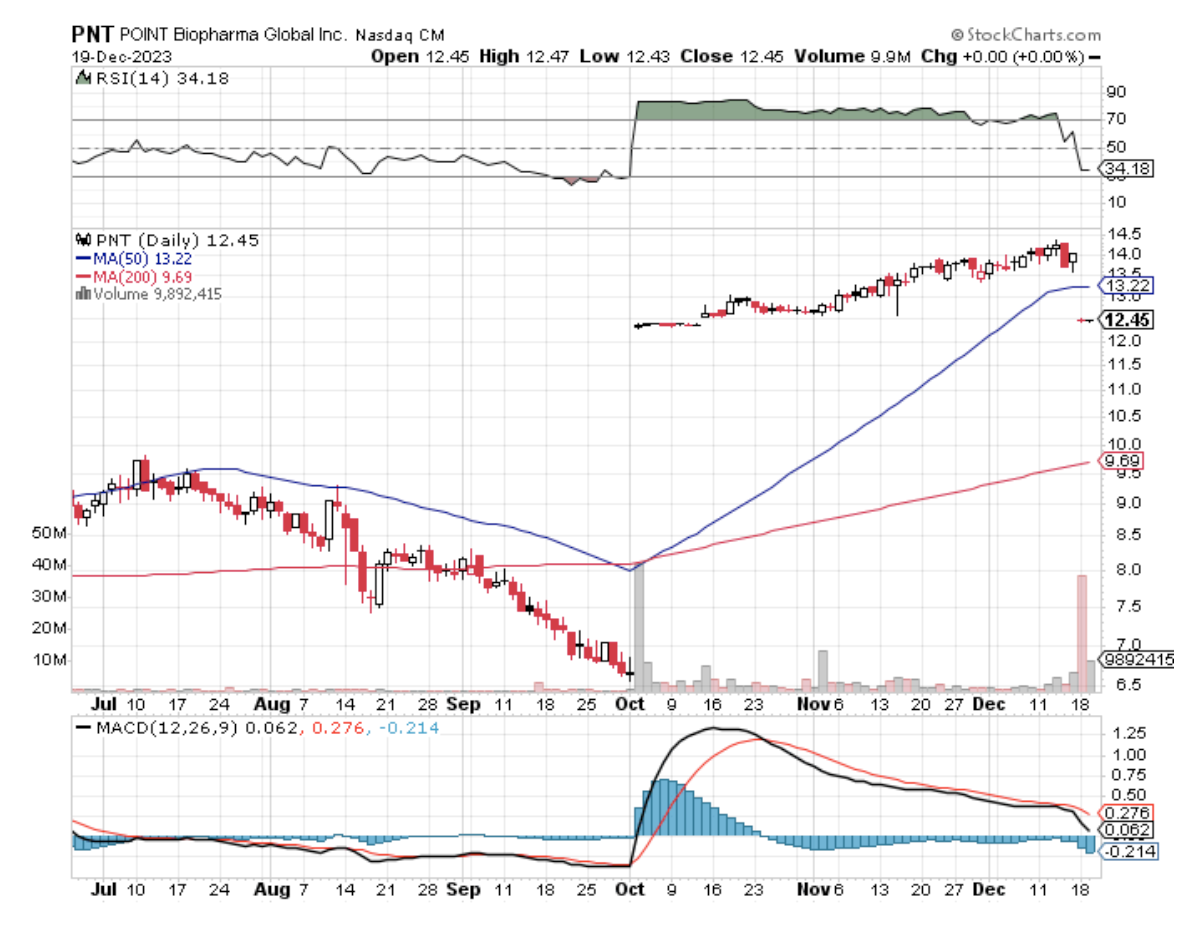
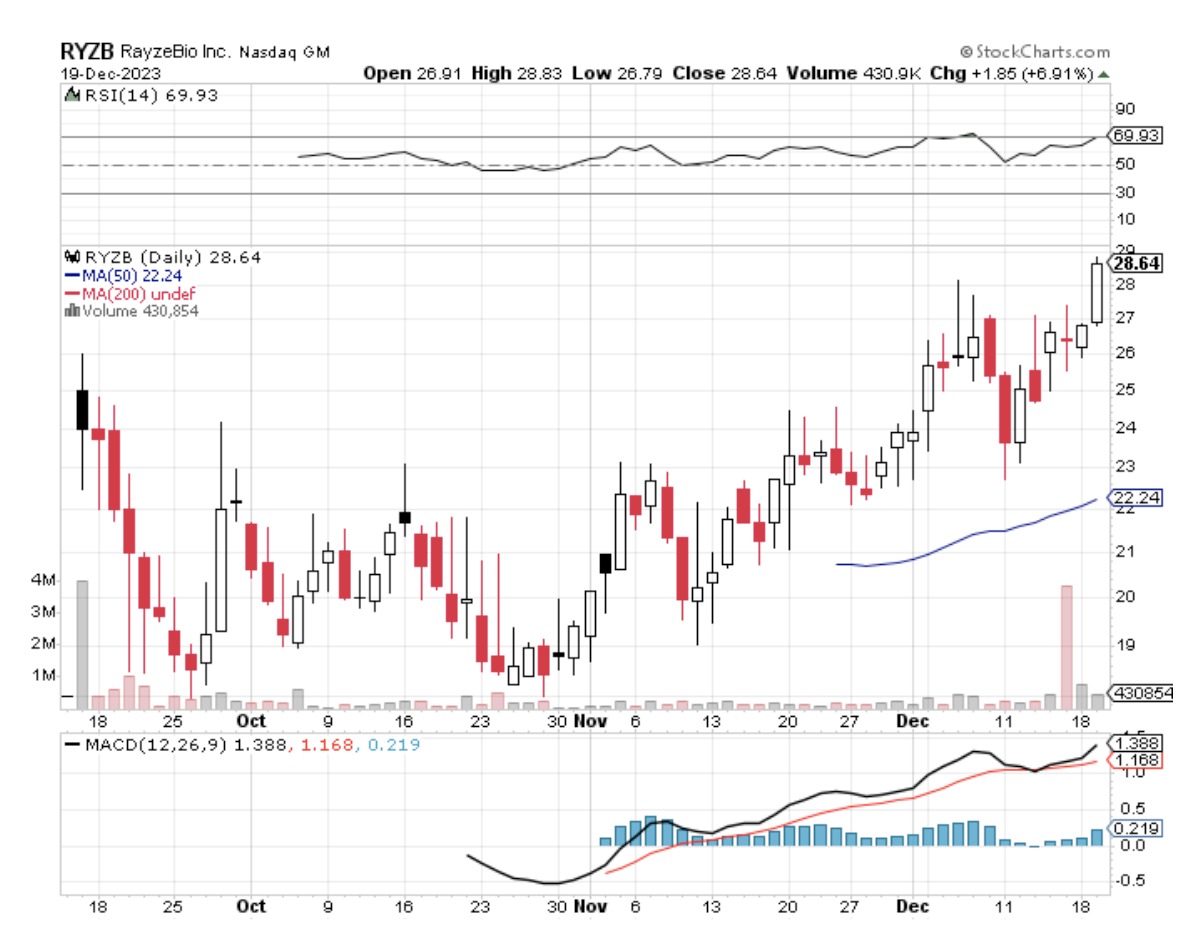
Mad Hedge Biotech and Healthcare Letter
November 9, 2023
Fiat Lux
Featured Trade:
(AN UNDERDOG’S LONG-TERM PLAY)
(MRK)
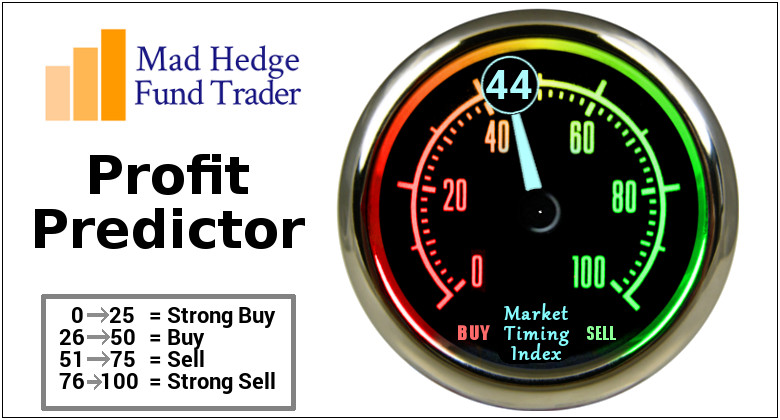
When sifting through the financial performances this earnings season, a pattern emerges among pharmaceutical giants – a sell-off that persists whether the news is good or bad.
However, amidst this tumultuous landscape, there’s one name that stands out as a beacon of strategic success: Merck Pharmaceuticals (MRK).
The company’s financial metrics are noteworthy. Trading at 14 times forward earnings aligns with industry standards, signaling a stable investment to Wall Street. This valuation reflects not just current profitability but anticipates future earnings, a critical measure for savvy investors.
Merck's robust market cap of $262 billion indicates more than just its size; it signifies its influence and foresight in the biotech field.
Its recent collaboration with Japan's Daiichi Sankyo reflects this, involving a substantial $4 billion upfront investment for a partnership that could be worth up to $22 billion.
These figures aren't just impressive; they underscore Merck's commitment to advancing cancer treatment through a series of antibody-drug conjugates aimed at solid tumors.
However, everyone knows that the healthcare industry is a long game.
Merck exemplifies this, banking on long-term outcomes, particularly with Keytruda, its leading cancer drug. Bringing in $16 billion in Q3 revenue, Keytruda is a testament to Merck's ability to not only develop but also commercialize high-impact therapies.
Even as Keytruda's patent protection approaches its 2028 expiration, Merck is already grooming its pipeline, ensuring a succession of treatments to maintain its market dominance.
In the immediate term, Keytruda is on a trajectory to become the top-selling drug globally, with projections pointing towards a staggering $30 billion in sales by 2028. This continued success is not a cause for complacency; instead, it's a launching pad for Merck as it orchestrates its future portfolio with strategic precision.
That’s why the Daiichi Sankyo collaboration is pivotal even if these programs are still in the clinical trial phase.
The probability of a phase 1 trial leading to a marketable drug is a mere 3.4%, yet Merck's investment suggests confidence in these potential therapies. This foresight is critical for anyone looking beyond immediate gains toward substantial future returns.
Turning back the pages to November 2021, we find another example of Merck’s long-term outlook. At the time, the company made headlines with its acquisition of Acceleron Pharma, a move costing $11.5 billion. This strategic play wasn't a mere chance but a calculated maneuver to secure a promising asset: Sotatercept.
This drug represents a breakthrough for those battling pulmonary arterial hypertension, a severe condition that constricts blood vessels in the lungs and makes breathing a laborious task.
With analysts predicting Sotatercept's sales could soar to $2.6 billion by 2028, this acquisition is a decisive stride toward future profitability.
Shifting focus to Merck's diversified portfolio, there's more to its story than these treatments.
Its HPV vaccines, like Gardasil, represent a significant foray into preventive health. Meanwhile, its animal health division boasts the resilience of a bull market. Moreover, its R&D efforts are primed to usher in a new era of blockbusters as Keytruda nears the end of its patent life.
Dividend growth is another proof of Merck's financial health and investor-focused approach.
Over the past decade, dividends have increased by 66%, outpacing the average yield of the S&P 500. The current cash payout ratio suggests there's potential for growth, offering an attractive proposition for income-focused investors.
In the broader context of investment strategies, Merck's maneuvers construct a compelling narrative for a bullish stance. Overall, the company’s proactive and diverse approach to biotechnology makes it a noteworthy contender for investors seeking long-term growth.
While the stock market is often swayed by the immediate ebb and flow of quarterly earnings, Merck's consistent investment in their pipeline, strategic partnerships, and dividend growth paints the picture of a company poised for sustained success. I suggest you buy the dip.
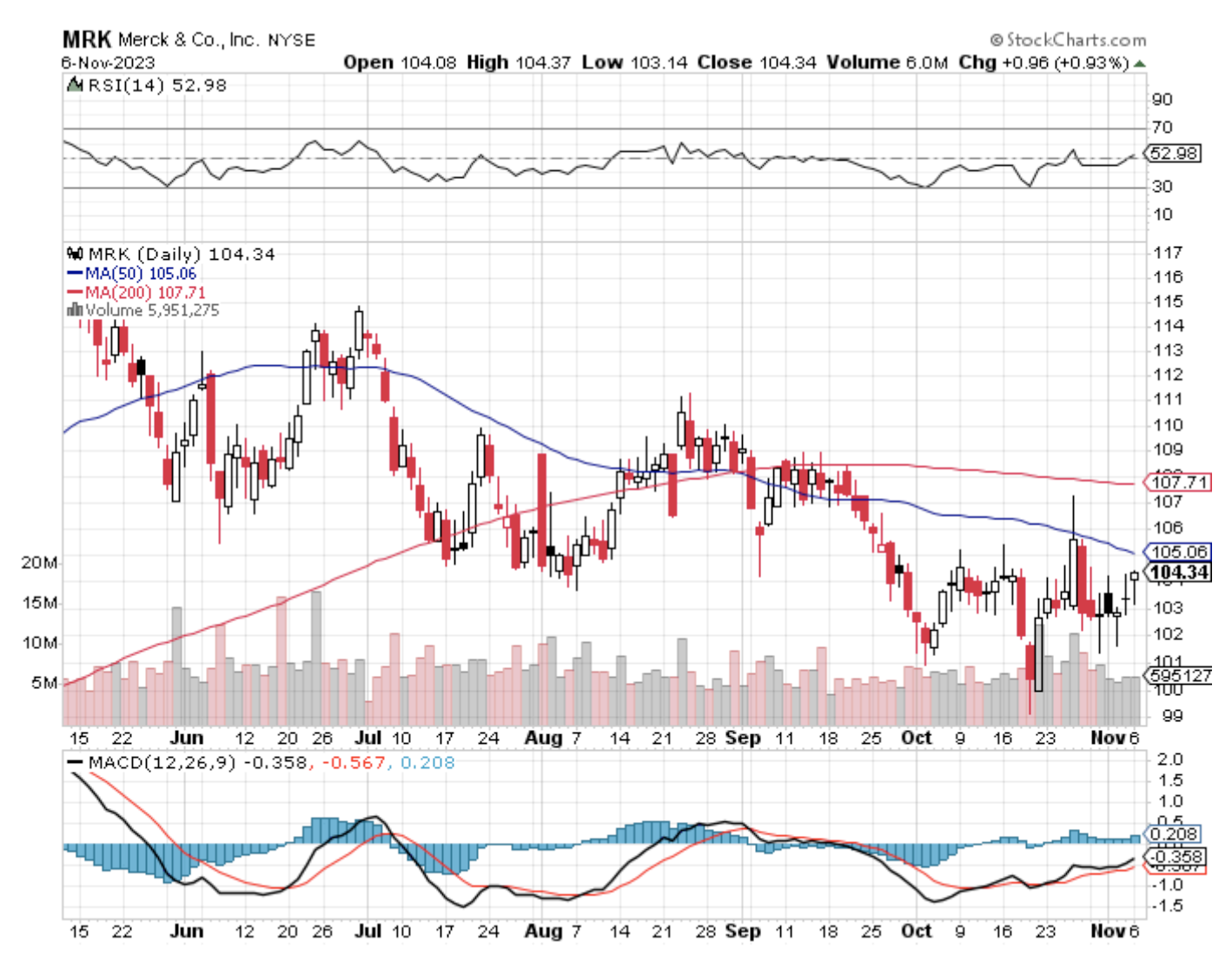
Mad Hedge Biotech and Healthcare Letter
October 19, 2023
Fiat Lux
Featured Trade:
(THE UNSUNG HERO OF PHARMA DISTRIBUTION)
(MCK), (CI), (UNH), (PFE), (MRK), (LLY), (NVO), (CAH), (COR)
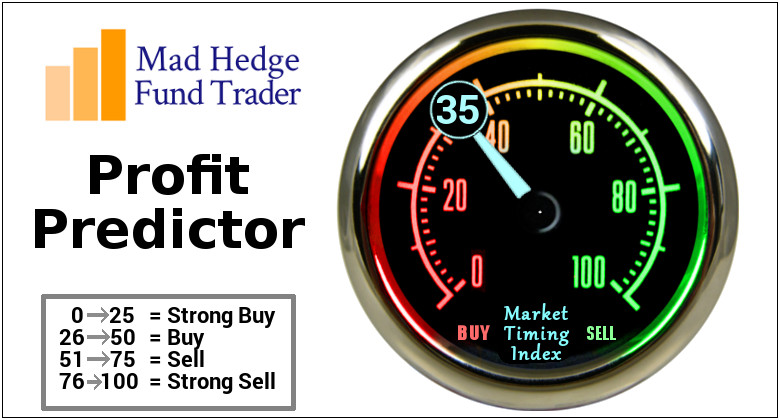
McKesson (MCK) is the silent behemoth of the U.S. corporate world that's likely slipped under your radar. As the ninth-largest U.S. company by revenue, it doesn’t grab the headlines like some of its pharmaceutical peers. However, with a robust 22% stock gain this year alone, investors might want to sharpen their focus on this quiet achiever.
Now, you might mistake McKesson for a pharmacy benefit manager like Cigna Group's (CI) Express Scripts or UnitedHealth Group’s (UNH) OptumRx. But it doesn't stand shoulder-to-shoulder with pharmaceutical giants such as Pfizer (PFE) or Merck (MRK). Instead, its pivotal role ensures that prescription medications, consumed by a large fraction of Americans, reach their intended destinations.
Their operational model cuts through the noise: acquire medications from manufacturers and deliver them seamlessly to pharmacies. This spans local establishments and major national chains, including stalwarts like Walmart (WMT) and CVS Health (CVS).
Distributing medications is intricate. Not any logistics company can step up to the plate. These drugs, strictly governed by regulations, demand precision in handling and transit. Specific conditions are mandatory to retain their efficacy and, ultimately, their trust with consumers.
Newcomers in the pharmaceutical space, such as Ely Lilly’s (LLY) Mounjaro and Novo Nordisk’s (NVO) Ozempic, are set to further accelerate McKesson's growth trajectory. McKesson's operations, in tandem with Cardinal Health (CAH) and Cencora (COR)—the former AmerisourceBergen—underscore the dominance of this trio in the industry.
Given their consistent performance and notable market share, there's no mistaking their leadership. From an investor's lens, their well-established distribution networks translate to attractive returns.
The narrative enveloping McKesson has matured, particularly in the wake of the pandemic. Pre-COVID-19, the air was thick with concerns – potential drug price regulations, whispers about executive remuneration, and the ever-looming shadow of opioid liabilities.
In recent history, McKesson navigated tumultuous waters. They confronted their role in the opioid saga, culminating in a staggering $7.4 billion settlement spanning two decades. Such a settlement, rooted in claims of McKesson's hand in opioid distribution, marked a challenging chapter in the company's journey. But, like all resilient entities, they emerged with lessons and a sharper focus.
Refocusing on its core competency in drug distribution, the future projections for McKesson radiate optimism. Sales are on track for a 10% rise by fiscal 2024, aiming for the $304 billion mark. On the earnings front, a hike of 4.8% is forecasted, reaching $27.20 a share, followed by a notable ascent to 13.4% in fiscal 2025 – a jump to $30.84 a share.
While profit margins have hovered around the 4.8% range over half a decade, the company's cash flow paints a promising picture. With a robust $5 billion cash flow from the previous fiscal year, the announcement of a $6 billion share repurchase plan indicates a stronger, more liquid financial position.
McKesson’s journey, past and present, casts it as a promising investment, both for its operational prowess and its strategic repurchase blueprint. Examining its financial statements reveals a commendable reduction in net debt over the past triennium.
When McKesson is pitted against the likes of Cardinal and Cencora, optimism for its prospects feels natural. Projections indicate a growth rate between 12-14% in the years on the horizon, potentially crowning it as an industry vanguard. Valued at 15.6 times forward earnings, even if it inches above its five-year mean, the stock's appeal remains intact. Given its robust growth metrics, the stock seems a potential bargain, especially when juxtaposed with fellow S&P 500 members.
And there's more in the mix. With McKesson poised to ride the wave of prescription surges, particularly from premium medications like Ozempic, Wegovy, and Mounjaro, revenue streams seem destined for an upward course. A sentiment echoed by industry comrades, Cardinal and Cencora.
To encapsulate, in the expansive tableau of the pharmaceutical sector, where innovation meets timely delivery, McKesson etches its mark. As the healthcare matrix continues its evolution, especially in a world reshaped by a pandemic, the resilience and growth story of McKesson becomes hard to sidestep for the discerning investor. It's high time investors pivot their gaze towards this under-the-radar giant, poised for more milestones.

Legal Disclaimer
There is a very high degree of risk involved in trading. Past results are not indicative of future returns. MadHedgeFundTrader.com and all individuals affiliated with this site assume no responsibilities for your trading and investment results. The indicators, strategies, columns, articles and all other features are for educational purposes only and should not be construed as investment advice. Information for futures trading observations are obtained from sources believed to be reliable, but we do not warrant its completeness or accuracy, or warrant any results from the use of the information. Your use of the trading observations is entirely at your own risk and it is your sole responsibility to evaluate the accuracy, completeness and usefulness of the information. You must assess the risk of any trade with your broker and make your own independent decisions regarding any securities mentioned herein. Affiliates of MadHedgeFundTrader.com may have a position or effect transactions in the securities described herein (or options thereon) and/or otherwise employ trading strategies that may be consistent or inconsistent with the provided strategies.
This site uses cookies. By continuing to browse the site, you are agreeing to our use of cookies.
OKLearn moreWe may request cookies to be set on your device. We use cookies to let us know when you visit our websites, how you interact with us, to enrich your user experience, and to customize your relationship with our website.
Click on the different category headings to find out more. You can also change some of your preferences. Note that blocking some types of cookies may impact your experience on our websites and the services we are able to offer.
These cookies are strictly necessary to provide you with services available through our website and to use some of its features.
Because these cookies are strictly necessary to deliver the website, refuseing them will have impact how our site functions. You always can block or delete cookies by changing your browser settings and force blocking all cookies on this website. But this will always prompt you to accept/refuse cookies when revisiting our site.
We fully respect if you want to refuse cookies but to avoid asking you again and again kindly allow us to store a cookie for that. You are free to opt out any time or opt in for other cookies to get a better experience. If you refuse cookies we will remove all set cookies in our domain.
We provide you with a list of stored cookies on your computer in our domain so you can check what we stored. Due to security reasons we are not able to show or modify cookies from other domains. You can check these in your browser security settings.
These cookies collect information that is used either in aggregate form to help us understand how our website is being used or how effective our marketing campaigns are, or to help us customize our website and application for you in order to enhance your experience.
If you do not want that we track your visist to our site you can disable tracking in your browser here:
We also use different external services like Google Webfonts, Google Maps, and external Video providers. Since these providers may collect personal data like your IP address we allow you to block them here. Please be aware that this might heavily reduce the functionality and appearance of our site. Changes will take effect once you reload the page.
Google Webfont Settings:
Google Map Settings:
Vimeo and Youtube video embeds:
